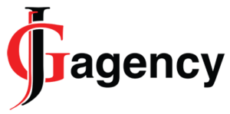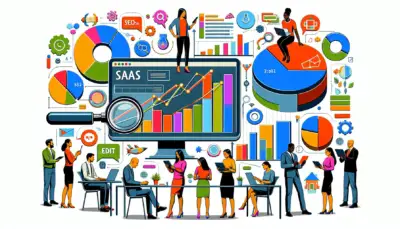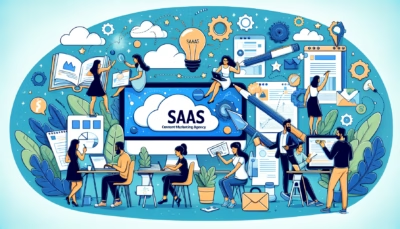Understanding B2B SaaS Growth Marketing
B2B vs. B2C Acquisition Strategies
When diving into B2B SaaS growth marketing, the first thing is getting the difference between B2B and B2C acquisition strategies. For B2B, we’re talking longer sales saga, bulk purchases, and making friends through channels like field events or webinars. Here, it’s all about building those epic connections with folks who might just be your ticket to success.
B2B players lean on a handful of crucial clients, which means holding onto them tight and keeping an eye on churn rates are the names of the game. B2C is more of a sprint with faster-deal cycles and smaller price tags, focusing on quantity and blitzing through sales without much fuss about individual bonding (Growth Marketing Pro).
Importance of Customer Acquisition
Landing new customers is the bread and butter in B2B SaaS marketing. It’s like juggling a cocktail of tricks to draw in fresh clients, from hunting down leads to creating killer customer experiences. Ace this, and you could turn customers into true-blue fans, and your business will spread like wildfire.
Email marketing and lead nurturing? They’re your secret weapons in B2B SaaS growth. Helping whip up custom campaigns tailored for different audience groups, these strategies nudge potential customers steadily through the sales funnel (Growth Division). Companies that nurture their leads are onto something big: they can bag 50% more sales at a bargain of 33% lower cost than those who don’t bother (Walnut).
Don’t forget referral marketing—the unsung hero of growth tactics. Dangling rewards for your current clients can get new folks onboard without too much hassle. This approach kind of builds bridges of trust with newcomers, fast-tracks the sales cycle, and ups your game by leaning on the thumbs-up from those who already love what you offer (Stratabeat).
For more goodies on nailing those acquisition strategies, hop over to our guide on saas marketing strategies.
Here’s a quick glance at the main differences between B2B and B2C acquisition strategies:
| Aspect | B2B Acquisition | B2C Acquisition |
|---|---|---|
| Sales Cycle | Long haul | Quick spin |
| Buying Amount | Big buys | Light picks |
| Customer Interaction | Lots of chat (events, webinars) | Short chats (digital ads) |
| Reliance on Customers | Heavy | Light |
| Focus Points | Keeping friends, churn watch | Seal the deal, customer’s lifetime worth |
Gaze through our articles on b2b saas marketing and saas inbound marketing to pick up more gems on elevating your marketing game to legendary status.
Making the Most of Marketing Channels
Hey there, fellow B2B SaaS enthusiasts! Buckle up as I take you on a whirlwind tour of some top-notch ways to reel in clients and keep ’em sticking around. We’re going to chat about Field Marketing Strategies, Event Marketing Tactics, and how Webinars pack a real punch.
Field Marketing Strategies
When we’re talking field marketing, it’s all about the personal touch. Imagine having a face-to-face chinwag with the potential big fish at exhibitions, conferences, or even in their own digs. It’s particularly handy when deals take a while to seal or involve a stack of cash.
It’s sorta like the good ol’ handshake approach. A lot of B2B sales kick off in a founder’s circle of chums, where trust runs high and relationships run deep. Sprinkle in some LinkedIn ads and voila, you got yourself a personalized pitch for folks with just the right job titles.
Here’s the skinny on field marketing:
- Live Demos: It’s show-and-tell time with your product in the spotlight.
- Hands-on Workshops: Let ’em get their mitts on your offerings.
- Meet & Greets: Because sometimes that face-to-face magic seals the deal, building trust and conversion rates like nobody’s business.
Check out our handy landing page templates for SaaS marketers if you want to dig deeper into creating killer experiences.
Event Marketing Tactics
Now, let’s chew the fat on event marketing – a sweet strategy to boost awareness and snag new customer leads in the B2B game. Hosting or even just showing up at industry pow-wows lets you vibe with your people on a whole new level.
Some tricks of the event marketing trade include:
- Trade Shows & Conferences: Your chance to grab some limelight and bag a bunch of leads.
- Webinars & Virtual Picnics: Reach folks far and wide without busting your budget.
- Lunch-and-Learn: Less “school,” more “cool”… it’s all about sharing knowledge in a laid-back setting.
By playing (the smart way) with email marketing and nurturing leads, you can shepherd folks through the sales journey and turn ’em into brand loyalists—take a gander at our piece on SaaS email marketing.
The Power of Webinars
Webinars… they’re like the golden ticket for B2B SaaS marketing. You get to flex your expertise, rub elbows with your crowd, and scoop up juicy leads all in one go. It’s about sharing wisdom and boosting your brand’s street cred.
Here’s what makes webinars golden:
- Lead Collection: Jot down those attendee details for future reach-outs.
- Thought Leadership: Position yourself as the biggest cheese in the industry.
- Interactive Fun: Keep ’em coming back with polls, Q&As, and live chatter.
As Growth Division points out, rolling out content like whitepapers, case studies, and webinars ups your street cred and helps clients feel all informed. And don’t sleep on email marketing for webinars; it’s got a whopping 4200% ROI, or $42 for every buck spent (Walnut).
For a deeper dive into crafting killer content, check out our treasure trove of B2B SaaS marketing articles.
Tables for Tracking Key Metrics
| Metric | Field Marketing | Event Marketing | Webinars |
|---|---|---|---|
| Cost per Lead | High | Medium | Low |
| Engagement Level | High | High | High |
| Conversion Rate | Medium | Medium | High |
| ROI | Variable | High | Very High |
Nail these marketing channels, and you’re on the road to boosting your B2B SaaS strategy and bringing in the big fish that’ll stick around for the long haul. For more wisdom, dive into our B2B SaaS marketing resources and marketing automation tips.
Key Metrics for Success
If you’re on a mission to get that B2B SaaS growth marketing wheel turning, you gotta keep an eye on some important numbers. Let’s dig into these superstar metrics for making it big in the SaaS biz.
Customer Acquisition Cost (CAC)
Alright, let’s talk money. Customer Acquisition Cost (CAC)—it’s like the price tag on each new customer. You figure it out by adding up your sales and marketing expenses over a certain time and dividing that total by the number of customers you reeled in during that same period (Userpilot).
How to Calculate CAC:
[ \text{CAC} = \frac{\text{Total Sales and Marketing Expenses}}{\text{Number of Acquired Customers}} ]
Keeping track of CAC gives you a clear picture of whether your spending to grow that customer base is worth it. The lower the CAC, the smarter your marketing moves are.
Customer Retention Rate
Wanna know if your customers are in it for the long haul? Enter the Customer Retention Rate. It tells you how successful your product marketing really is by showing how long folks stick around and continue doing business with you. To get the number, divide the total yearly cost for keeping customers happy—think success initiatives and retention teams—by the number of happy campers you’ve got on board (Userpilot).
How to Calculate Customer Retention Rate:
[ \text{Customer Retention Rate} = \left( \frac{\text{Customers at End of Period} – \text{New Customers Acquired}}{\text{Customers at Start of Period}} \right) \times 100 ]
Why does this matter? Hanging onto customers tends to cost less than finding new ones.
Monthly Recurring Revenue (MRR)
Talk about steady cash flow, Monthly Recurring Revenue (MRR) tells you the cash coming in from all those loyal subscribers each month. It’s pretty much your business’s financial health check and tells you if you’re growing.
[ \text{MRR} = \sum (\text{Number of Subscribers} \times \text{Average Revenue per Account (ARPA)}) ]
Tracking MRR helps you see how user growth matches up with making money and tweaking your B2B SaaS marketing approach.
| Metric | Description | Formula |
|---|---|---|
| CAC | Cost to acquire a customer | (\frac{\text{Total Sales and Marketing Expenses}}{\text{Number of Acquired Customers}}) |
| Customer Retention Rate | Percentage of customers sticking around | (\left( \frac{\text{Customers at End of Period} – \text{New Customers Acquired}}{\text{Customers at Start of Period}} \right) \times 100) |
| MRR | Monthly money from subscribers | (\sum (\text{Number of Subscribers} \times \text{ARPA})) |
If you’re all about diving deeper into these metrics and getting them to work better for you, check out our reads on calculating your SaaS customer acquisition cost (CAC) and how to optimize it and getting a grip on and shrinking churn rate in your SaaS biz. Keeping a handle on these metrics means you’re steering straight down the road to killer B2B SaaS content marketing.
Targeting Strategies
Getting your targeting right is like finding the perfect pizza topping for your B2B SaaS growth marketing pie. Nailing down who your ideal clients are and crafting spot-on buyer personas can seriously level up your marketing game—just like extra cheese on that pizza.
Ideal Customer Profile (ICP)
Your Ideal Customer Profile (ICP) is like your marketing compass. It shows you the way to companies that would totally dig your product or service. For B2B folks, nailing both your ICP and personas is gold (ProductLed). Your ICP includes stuff like company size, the line of work they’re in, their earnings, and the particular problems your product sorts out.
Check this out—here’s a sample ICP:
| Attribute | Details |
|---|---|
| Industry | Tech, Finance, Healthcare |
| Company Size | 100-500 folks |
| Annual Revenue | $10M – $50M |
| Key Challenges | Data handling, scaling |
| Location | North America, Europe |
With a clear ICP, you’ll steer your marketing ship toward the juiciest leads, making your efforts more of a bullseye. Once you’ve got your ICP down, try using lead scoring tools to vet leads like a pro (Walnut).
Developing Buyer Personas
If the ICP zeroes in on the right business, buyer personas are like those quirky caricatures of the folks calling the shots inside them. Crafting these helps ensure your marketing resonates so well it practically sings.
When shaping a buyer persona, think about jotting down:
- Name and Job Title: Give ’em a made-up name and title.
- Demographics: Age, gender, schooling—the works.
- Goals and Challenges: What are they aiming to do, and what’s cramping their style?
- Pain Points: What headaches does your product soothe?
- Decision-Making Process: Get inside their heads on how they hunt for solutions.
- Preferred Content Types: Whether they’re blog buffs or case study connoisseurs, cater to their tastes.
Here’s a buyer persona example:
| Attribute | Details |
|---|---|
| Name | Sarah TechLead |
| Job Title | CTO |
| Age | 35-45 |
| Education | Bachelor’s in Computer Science |
| Goals | Dreaming up tech that’s scalable |
| Challenges | Tight on cash, migration woes |
| Pain Points | Data safety, team teamwork |
| Decision Process | Invites the whole gang, loves research |
| Content Preferences | Case studies, deep-dive reports |
Smarten up your marketing by tailoring your strategy for these people, which leads to more focused chats. As BCG says, personalizing your approach makes you grow like nobody’s business—a cool 40% faster than your less savvy rivals.
If you’re itching for more about targeting strategies, check out our piece on b2b saas marketing. Put these strategies into play, and watch your B2B SaaS marketing not just roll but rock and roll.
Effective Content Marketing
Let’s get straight into how content marketing is your secret sauce for pumping up B2B SaaS growth marketing. Creating content that hooks, informs, and brings genuine value snags the attention of just about everyone who matters.
Importance of Blogs
Blogs are like the sturdy foundation of content marketing for any SaaS business. Churning out regular, interesting blog posts helps me build a reputation in my corner of the internet and boost my search engine presence — thanks, SEO! (Stratabeat). By digging into what keeps my audience up at night and offering solutions, I can show off my SaaS product as something you can trust in the biz.
| Blogging Perks | What It Means |
|---|---|
| Brings in More Visitors | Blogs get you noticed by search engines |
| Builds Trust | Shows you know your stuff |
| Grabs Attention | Offers real value to would-be customers |
Need more blog-boosting advice? Peek at our guide on crafting a high-converting content strategy for your SaaS.
Role of Whitepapers
Whitepapers are like VIP tickets when it comes to explaining industry specifics. They let me dig into serious topics with data-packed insights and handy solutions. By offering them as exclusive content, I can snag those leads and gently guide them through my sales journey.
Key things to slam dunk into your whitepapers:
- Dig-deep research and solid data
- Case studies showing the nitty-gritty
- Clear tips I can take to the bank
For more on nailing those whitepapers, swing by our page on B2B SaaS content marketing.
Crafting Compelling Case Studies
Case studies are all about showing off what my SaaS product can do in the real world. Sharing success stories and solid results builds trust and gives potential customers the nudge they need. Case studies usually cover:
- A quick intro to the client and their hurdles
- A play-by-play of how we solved it
- The jaw-dropping results
| Anatomy of a Case Study | Details |
|---|---|
| Intro to Client | Background and field |
| Challenges | What was tripping them up |
| Solutions | How my SaaS magic worked |
| Results | The proof in the pudding! |
Need some fresh ideas? Have a look at our roundup of 10 SaaS content marketing success stories.
With blogs, whitepapers, and case studies up my sleeve, I’m ready to hit those B2B SaaS growth marketing targets. Want more tricks up your sleeve? Check out our stash on SaaS product marketing and SaaS marketing strategies.
Enhancing User Experience
So, let’s chat about keeping users happy in the wild, wild west of B2B SaaS growth marketing. Here’s the meat and potatoes: UX design, checkout processes, and onboarding are where the magic happens.
Importance of UX Design
First off, a banging sales funnel with smart UX design is like hitting the jackpot for a SaaS project. Get it right, and you’ve got satisfied users, more conversions, and they’re sticking around like it’s old times..
Here’s the lowdown on key UX design essentials:
- Users should feel like navigational wizards.
- Calls-to-action need to yell, “Click me!”
- Keep branding and design as smooth as silk.
Optimizing Checkout Processes
Let’s talk about checkout – the crossroads where users decide to go all in or nope out. It’s gotta be as slick as a used car salesman but honest like your granny (Eleken).
Make your checkout page a breeze by:
- Cutting down on info overkill in forms.
- Making that shiny call-to-action shine brighter.
- Giving clear instructions – users aren’t mind readers.
| Checkout Optimization Tricks | Impact on Conversion Rate (%) |
|---|---|
| Form Makeover | +15% |
| Flashy Call-to-Action | +10% |
| Clear Directions | +8% |
Leveraging User Onboarding Experiences
Now, onto getting folks onboard and loving it. If they get lost in onboarding, it’s like watching a horror flick blindfolded. Use product tours and friendly how-to’s to show the ropes, so they’re not left scratching their heads.
Nail the onboarding by:
- Creating hands-on tutorials.
- Using guides that walk users through step-by-step.
- Shooting helpful in-app messages for extra support.
For more tricks up your sleeve, swing by our guide on creating a seamless SaaS onboarding experience.
Honing in on user experience means happy campers who are more likely to stick around and root for your success in the B2B SaaS hustle. If you’re itching for more, check out b2b saas marketing strategies and other saas marketing tools to boost your game.





